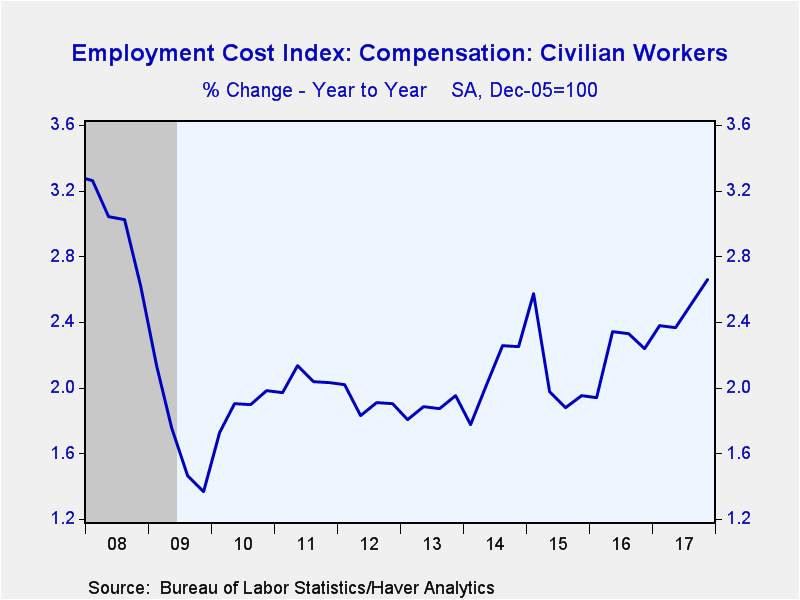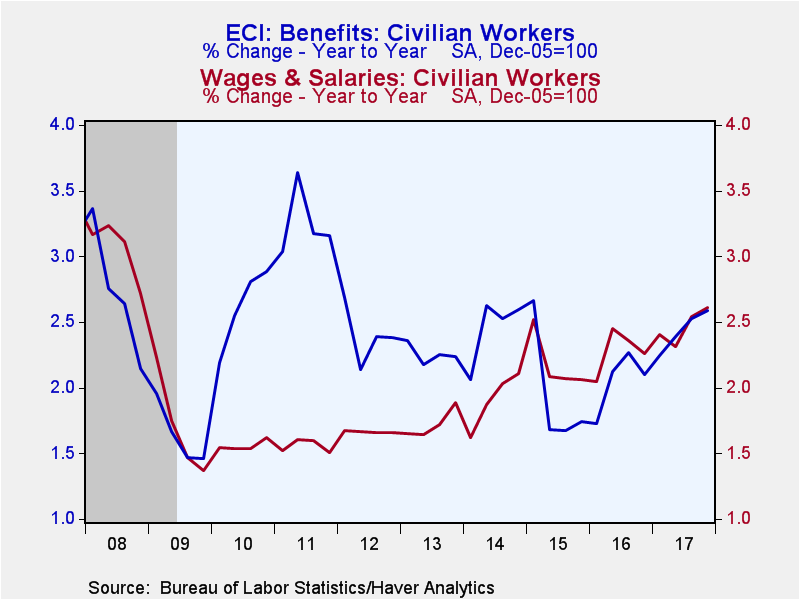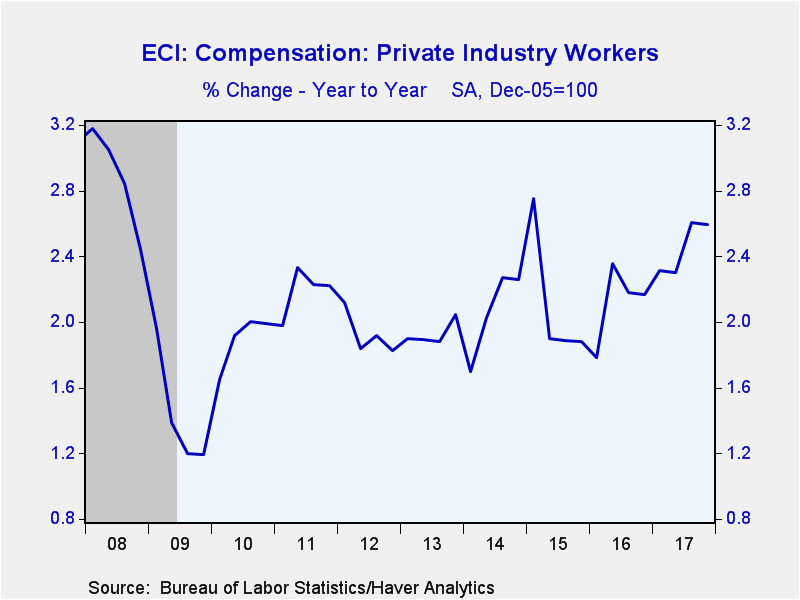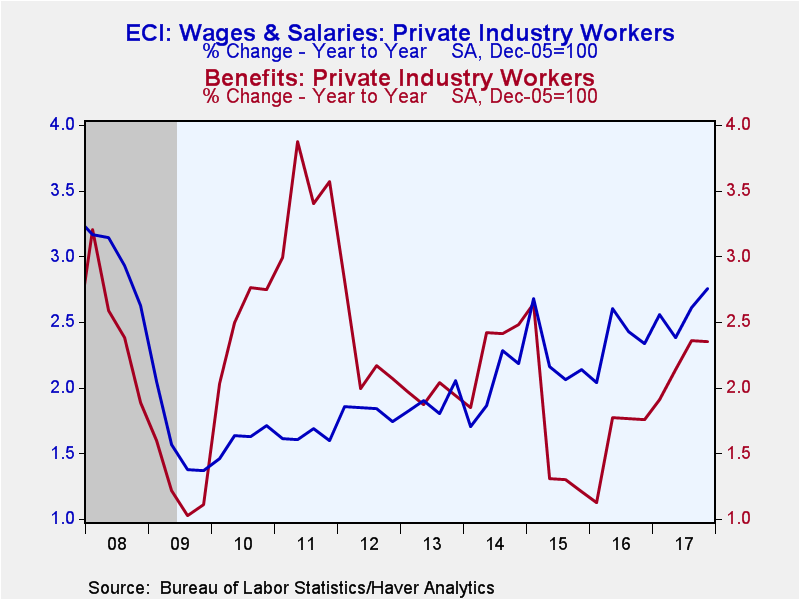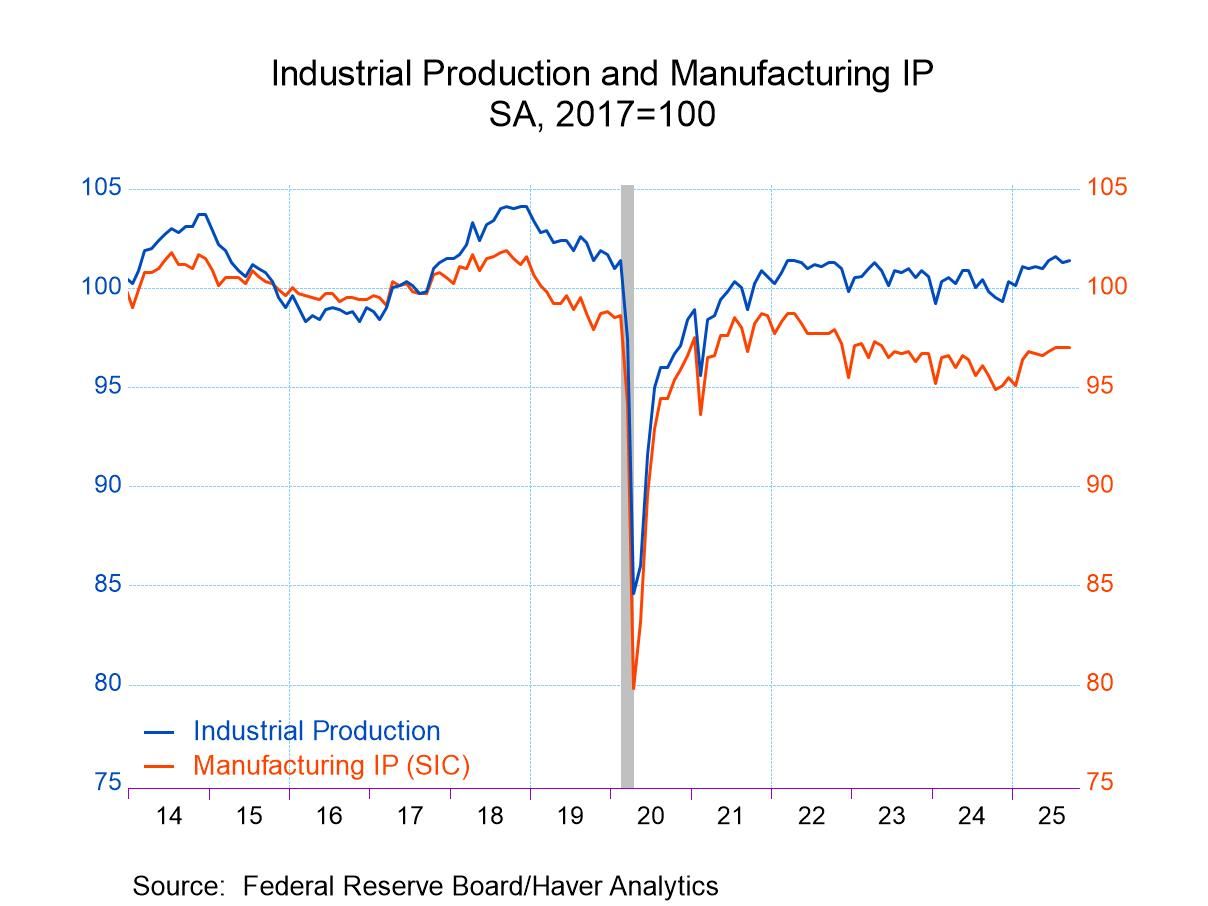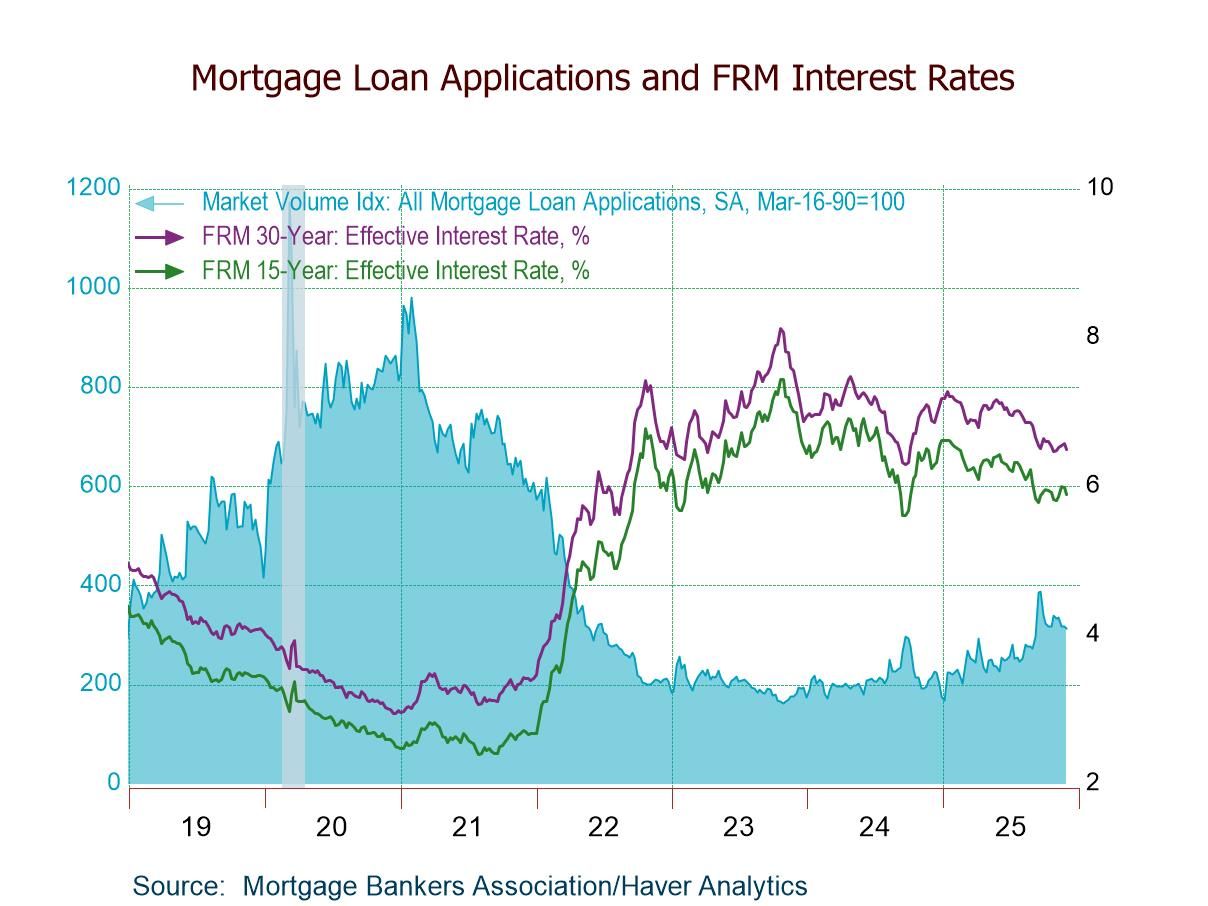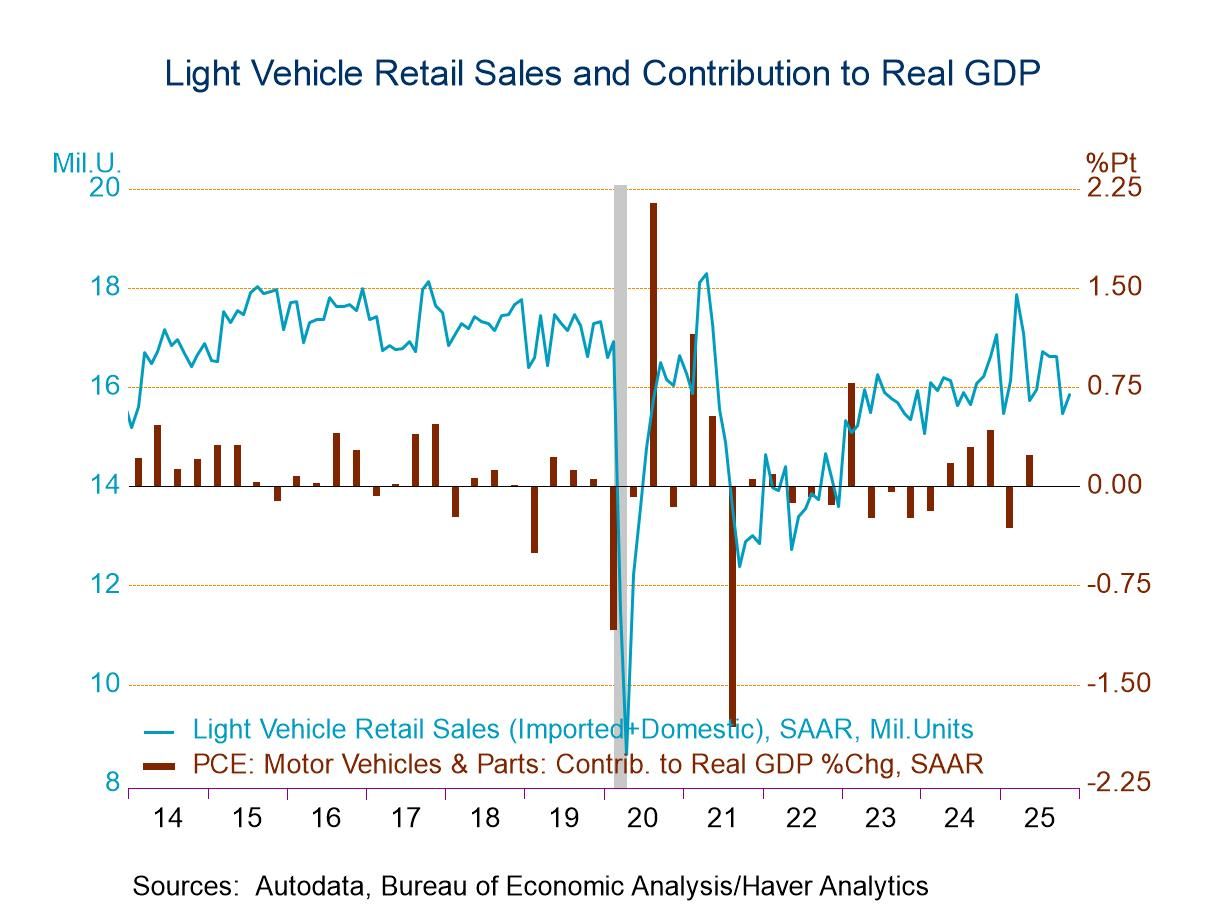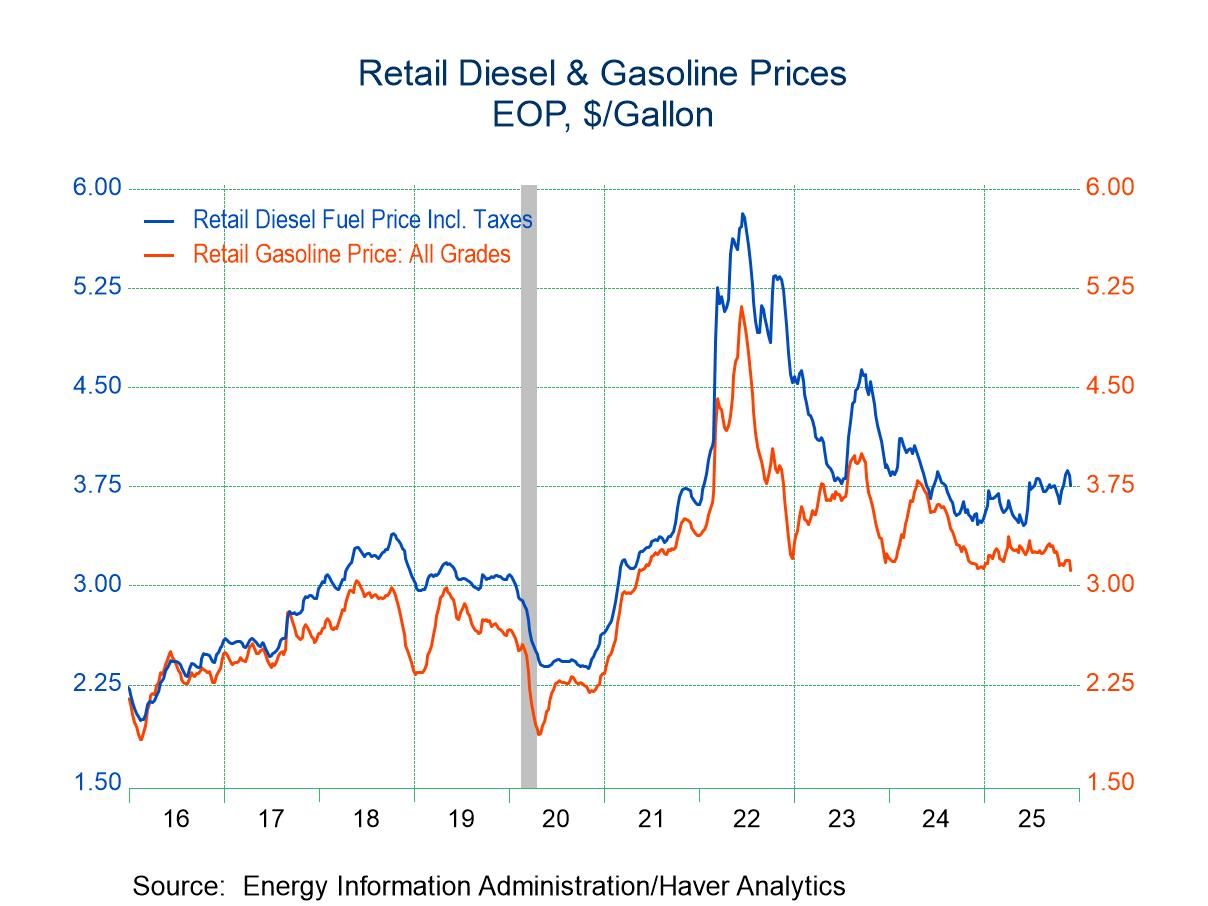 Global| Jan 31 2018
Global| Jan 31 2018U.S. Employment Costs Slow in Q4 But Continue Longer-term Rise
by:Sandy Batten
|in:Economy in Brief
Summary
The employment cost index for civilian workers rose 0.6% q/q in the fourth quarter of 2017, down from a 0.7% q/q rise in the third quarter. However, the y/y rate of increase advanced to 2.7% in the fourth quarter from 2.5% in the [...]
The employment cost index for civilian workers rose 0.6% q/q in the fourth quarter of 2017, down from a 0.7% q/q rise in the third quarter. However, the y/y rate of increase advanced to 2.7% in the fourth quarter from 2.5% in the third. This was the fastest pace of y/y growth since Q3 2008. Action Economics Forecast Survey had looked for a 0.5% q/q increase. Wages and salaries and benefit costs were each up 0.5% q/q (2.6% y/y) in the fourth quarter. Wages and salaries growth slowed from a 0.7% q/q gain in Q3, while the rise in benefits slowed from a 0.8% increase in Q3. The y/y gain in wages and salaries in Q4 was the largest since Q4 2008.
Notwithstanding the head shaking among economists as to why employment costs have not risen more given that the unemployment rate is at a 17-year low, the employment cost index and its components have been gradually accelerating and point to an ongoing, albeit gradual, tightening of labor-market conditions. For all of 2017, the ECI for civilian workers rose 2.5%, the fourth consecutive year that the pace of increase has risen. The 2017 rise was the largest since 2008. Wages and salaries have exhibited the same dynamics. For all for 2017, they were also up 2.5%, the sixth consecutive year of acceleration and the largest increase since 2008. The path of changes in benefit costs has deviated somewhat from those for total compensation and wages and salaries. Benefits costs rose 2.4% for all of 2017, the second consecutive year of acceleration after having generally slowed over the preceding four years.
The increase in employment costs for private industry workers also slowed in the fourth quarter. Total compensation rose 0.5% q/q, down from a 0.8% q/q gain the Q3. The quarterly slowdown in Q4 was spread across both goods-producing and services-producing sectors. In the goods sector, manufacturing compensation slowed to a 0.6% q/q gain from a 1.0% q/q increase in Q3. The slowdown in compensation in the services sector was widespread, led by 0.2% q/q decline in credit intermediation compensation (vs. a 0.4% q/q increase in Q3), a 0.1% q/q gain in real estate compensation (vs. a 0.8% q/q increase in Q3), and a 0.5% q/q rise in professional and business services compensation (vs. a 1.1% q/q jump in Q3).
Both wages and salaries and benefit costs for private industry workers slowed in the fourth quarter. Wages and salaries increased 0.6% q/q, down slightly from a 0.7% q/q gain in Q3. However, the y/y pace of growth accelerated to 2.8% in Q4 from 2.6% in Q3. This was the fastest y/y pace since Q3 2008. Benefits rose 0.4% q/q in Q4, down from a 0.7% q/q increase in Q3 and were up 2.4% from a year earlier.
The employment cost index figures are available in Haver's USECON database. Consensus estimates come from the Action Economics survey in Haver's AS1REPNA database.
Sandy Batten
AuthorMore in Author Profile »Sandy Batten has more than 30 years of experience analyzing industrial economies and financial markets and a wide range of experience across the financial services sector, government, and academia. Before joining Haver Analytics, Sandy was a Vice President and Senior Economist at Citibank; Senior Credit Market Analyst at CDC Investment Management, Managing Director at Bear Stearns, and Executive Director at JPMorgan. In 2008, Sandy was named the most accurate US forecaster by the National Association for Business Economics. He is a member of the New York Forecasters Club, NABE, and the American Economic Association. Prior to his time in the financial services sector, Sandy was a Research Officer at the Federal Reserve Bank of St. Louis, Senior Staff Economist on the President’s Council of Economic Advisors, Deputy Assistant Secretary for Economic Policy at the US Treasury, and Economist at the International Monetary Fund. Sandy has taught economics at St. Louis University, Denison University, and Muskingun College. He has published numerous peer-reviewed articles in a wide range of academic publications. He has a B.A. in economics from the University of Richmond and a M.A. and Ph.D. in economics from The Ohio State University.


